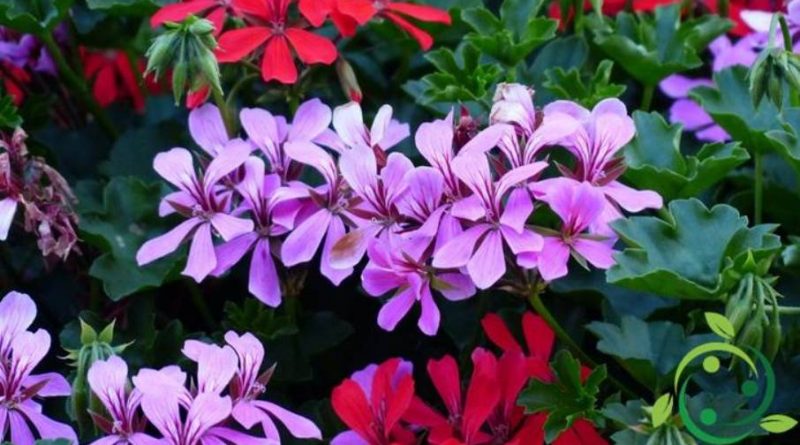How to grow Pelargonium
How to grow Pelargonium
Pelargonium, also known as African Germanium (Pelargonium L’Hér., 1789) is a genus of perennial suffrutescent plants, originating in southern Africa, of the Geraniaceae family.
The most known species of this genus and commonly cultivated are:
– Pelargonium zonale or common geranium with hairy and heart-shaped foliage characterized by a dark ring;
– Pelargonium peltatum or geranium ivy with glossy and fleshy peltate leaves, hanging stems;
– Pelargonium grandiflorum or butterfly geranium with elegant flowers with five brown-reddish spots and deeply lobed leaves;
– Pelargonium odoratissimum or fragrant geranium with small jagged and aromatic leaves, small white or pink flowers with a characteristic apple fragrance; Pelargonium graveolens with a rose scent;
– Pelargonium radens with the scent of lemon.
In this card we will see how to cultivate the Pelargonium considering that the most cultivated geraniums are the zonal and ivy ones: of these numerous varieties have been selected with different flower colors, ranging from red, to pink, to violet, to fuchsia, to orange and white.
For the cultivation of these plants, bear in mind that Pelargonium prefers clay soils that can be grown both in the garden and in pots. In pot cultivation, consider that each year, in spring, the plants are repotted in larger containers and the fertilized soil. Normally after a month of rest the plant is repotted and resumes its vegetative cycle. The roots if they are long are shortened and the old earth bread must be eliminated.
Plants grown in pots, in the vegetative phase, should be bathed in moderation and fed with a liquid fertilizer. In winter the watering must be reduced.
For plants grown in the garden, an organic fertilizer with mature manure, earthworm humus or other well-humified organic substance is sufficient, in the period of vegetative growth in early spring.
The Pelargonium, despite being a plant that bears the summer heat well, does not tolerate the cold well; for this reason it is necessary that the ambient temperature must be at least 10 °. For this reason, in garden cultivation, the Pelargonium is intended for warmer areas, with mild winters and periods of less than 10 ° C, which are very limited.
To obtain a prolonged flowering it is necessary that the withered flowers should be eliminated and the stems reduced by about half.
The propagation is mainly agamic using small branches of at least 10 cm and placed in a substrate based on sand and flower soil. Once rooted it can be placed as a permanent home.
Regarding diseases and parasites, we remind you that Pelargonium can be affected by pests and diseases. If the leaves are faded and yellowed (especially in apartment cultivations) the cause is the lack of exposure to light: the plant must be moved to a brighter place. If the stem becomes black, watering must be reduced. The presence of brown spots on the underside of the leaves, means that the plant has been attacked by scale insects. The insect must be removed with an alcohol wipe, washing the plant with soap and water and then rinsing it properly, or with the use of specific natural pesticides.
To avoid the proliferation of scale insects or even aphids, it is advisable to limit the use of nitrate-based fertilizers. The presence of the red spider mite is noted because the surface of the leaves appears stained with yellow and brown. In this case, the leaves should be sprayed, as the parasite proliferates in the absence of moisture.

